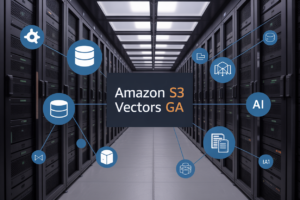You stare at the terminal message in disbelief: “AWS Lambda deployment failed: function code too large.” Seriously? Again? This is the third time this week you’ve hit those pesky Lambda size limits.
Let’s be real – Lambda’s 250MB limit feels like trying to pack for a month-long vacation in a school backpack. Every serverless developer has been there, frantically hunting for ways to optimize AWS Lambda layers before a deadline hits.
In this guide, you’ll discover five battle-tested techniques to slash your Lambda package size without sacrificing functionality. I’ve used these exact methods to reduce deployment packages by up to 70% while actually improving performance.
But first, let me show you why the most common optimization advice you’ll find on Stack Overflow might actually be making your Lambda functions worse…
Understanding AWS Lambda Size Limitations
Current Lambda Package Size Restrictions
Working with AWS Lambda? You’re boxed in by a 50MB compressed deployment package limit and 250MB uncompressed code/dependencies. Even with layers, you still face a 250MB total runtime limit. These constraints aren’t just arbitrary numbers—they define what’s possible in your serverless architecture.
Why Size Matters for Serverless Performance
The bloat in your Lambda function isn’t just an aesthetic problem—it’s killing your performance. Oversized functions take longer to initialize, increase cold start times, and burn through memory faster. When your function drags, your users notice. Every megabyte counts in the serverless world.
Common Causes of Bloated Lambda Functions
Your Lambda package is probably overweight because you’re including unnecessary dependencies. That machine learning library? Those test files? The debug packages? They’re all dead weight. Many developers also bundle entire frameworks when they only need specific components, or include development dependencies in production code.
The Real Cost of Oversized Lambda Deployments
Big Lambda functions hit your wallet hard. They consume more memory (which you pay for), extend execution time (which you also pay for), and increase cold start latency (which costs you users). Plus, larger functions are harder to maintain, more difficult to update, and more likely to contain security vulnerabilities hiding in unused code.
Getting Started with AWS Lambda Layers
Getting Started with AWS Lambda Layers
A. What Are Lambda Layers and Why They Matter
Lambda layers are a game-changer when working with complex serverless applications. Think of them as reusable packages of code and dependencies that you can attach to any function. Instead of bundling everything into your function package (hello, bloated deployment!), layers let you separate shared components. This keeps your actual function code lean and focused on business logic.
B. Benefits of Using Layers for Code Organization
Code organization becomes a breeze with Lambda layers. You can split your application into logical pieces – keep core business logic in your function while moving dependencies, utilities, and frameworks to layers. This separation makes maintenance simpler since you can update shared components in one place. Plus, your deployment packages stay small and clean, making development much less frustrating.
C. Layer Version Management Best Practices
Version management isn’t just bureaucratic overhead – it’s your safety net with layers. Always increment layer versions instead of overwriting existing ones. This prevents breaking dependent functions when you update code. Tag your layers with meaningful descriptions and implement a solid testing strategy before promoting new versions. Consider automating layer deployment through CI/CD pipelines to maintain version consistency.
D. Setting Up Your First Lambda Layer
Creating your first layer isn’t rocket science. Package your dependencies in a structure Lambda understands – typically with a /nodejs/node_modules path for Node.js or /python for Python libraries. Zip it up, upload through AWS Console or CLI, and you’re set. Try starting with something simple like moving your node_modules or a utility library to get comfortable with the workflow.
E. How Layers Impact Cold Start Times
Cold starts and Lambda layers have a complicated relationship. Done right, layers can actually improve startup times by caching shared components. But pile on too many bloated layers and you’ll pay the price in performance. The key is balance – use layers for genuinely shared code, keep them lean, and consider combining related dependencies into single, purpose-built layers rather than creating dozens of tiny ones.
Smart Strategies for Code Optimization
Smart Strategies for Code Optimization
A. Identifying and Removing Unused Dependencies
You’re bloating your Lambda functions with code you don’t even use. Been there, done that. Tools like npm-prune for Node.js or pipreqs for Python can slash your package size dramatically by cutting the dead weight. Run dependency analysis before every deployment and watch your Lambda size shrink overnight.
Advanced Layer Management Techniques
A. Creating Shared Dependency Layers Across Functions
Ever struggled with duplicate dependencies across multiple Lambda functions? Create shared layers instead! Package common libraries like AWS SDK or logging frameworks into a single layer, attach it to all relevant functions, and watch your deployment packages shrink dramatically. This approach not only saves space but speeds up deployment times too.
B. Implementing Layer Versioning for Better Control
Version control for your Lambda layers isn’t just nice-to-have—it’s essential. Each time you update a layer, AWS automatically assigns a new version number. Pin your functions to specific layer versions to prevent unexpected behavior during deployments. This strategy gives you granular rollback capabilities and creates a stable foundation for your serverless architecture.
C. Region-Specific Layer Optimization Strategies
Different AWS regions have different performance characteristics. Did you know you can optimize layers based on regional traffic patterns? High-traffic regions might benefit from more aggressively minified libraries, while you can prioritize debugging capabilities in development regions. This region-specific approach balances performance and development experience across your global footprint.
Containerization Alternatives for Complex Dependencies
When to Consider Container Images Over Layers
Ever hit that wall with Lambda layers? When your dependencies get wild or you need identical environments across services, container images shine. They let you package everything—dependencies, code, runtime—in one bundle. Plus, you can test locally with Docker before deploying, avoiding those “works on my machine” headaches.
Docker Image Optimization for Lambda
Container images don’t have to be bloated monsters. Start with slim base images like Alpine Linux. Multi-stage builds let you compile in one container and copy just the essentials to another. Strip debug symbols, remove package caches, and compress layers to shrink your images further. Small images mean faster cold starts—and your wallet will thank you.
AWS ECR Integration Best Practices
Getting your containers into Lambda smoothly requires ECR finesse. Tag images meaningfully—never rely on “latest” in production. Implement image scanning to catch vulnerabilities before deployment. Set lifecycle policies to auto-purge old images before your storage costs explode. And don’t forget to use IAM roles with least privilege for your Lambda-to-ECR connections.
Performance Comparison: Layers vs. Containers
| Aspect | Layers | Containers |
|---|---|---|
| Cold Start | Faster for small dependencies | Slower initially, better with optimization |
| Consistency | Can differ across functions | Identical environment guaranteed |
| Size Limit | 250MB unzipped | 10GB image size |
| Local Testing | Limited options | Full Docker compatibility |
| Dependency Conflicts | Possible version clashes | Isolated environment |
| Deployment Speed | Quick for small changes | Entire image must be uploaded |
Monitoring and Optimizing Layer Performance
Tools for Tracking Layer Size and Usage
Ever tried squeezing into pants that don’t fit? That’s your Lambda function hitting size limits. AWS CloudWatch and AWS Cost Explorer give you real-time metrics on layer usage. The AWS CLI’s get-layer-version command shows exact layer sizes, while third-party tools like Lumigo and Thundra provide deeper visibility into how your layers perform in production.
Setting Up Alerts for Layer Size Thresholds
Nobody likes surprises, especially when your function suddenly fails deployment. Set up CloudWatch alarms that trigger when your layers approach critical size thresholds. You can configure notifications through SNS to hit your Slack channel or email inbox. Pro tip: start with alerts at 75% of max size to give yourself breathing room before things get critical.
Automated Testing for Layer Performance Impact
Think your new layer won’t affect cold start times? Think again. Implement automated performance testing in your CI/CD pipeline using tools like Artillery or Serverless Framework plugins. These tests should measure cold start times, execution duration, and memory usage before and after layer changes. Numbers don’t lie – if your layer is causing problems, you’ll know immediately.
Iterative Optimization Workflow
Optimization isn’t a one-and-done deal. Create a workflow where you regularly review layer usage metrics, identify bloated dependencies, and implement improvements. Follow this cycle: measure current performance, identify the biggest size offenders, implement targeted optimizations, then measure again. Rinse and repeat monthly to keep your Lambda functions running lean and mean.
Managing AWS Lambda size constraints doesn’t have to be a roadblock for your serverless applications. By leveraging Lambda Layers strategically, implementing code optimization techniques, and adopting advanced layer management practices, you can significantly reduce deployment package sizes while improving performance. Remember that proper monitoring of your layers is essential to maintain optimal function execution over time, and for extremely complex dependencies, containerization alternatives are always available.
As you continue your serverless journey, focus on creating modular, reusable layers that can be shared across multiple functions. Start by identifying common dependencies, implement proper version control for your layers, and regularly audit your packages to eliminate unnecessary bloat. With these practices in place, you’ll be able to build more efficient, scalable Lambda functions that meet even the most demanding requirements while staying well within AWS size limitations.



















